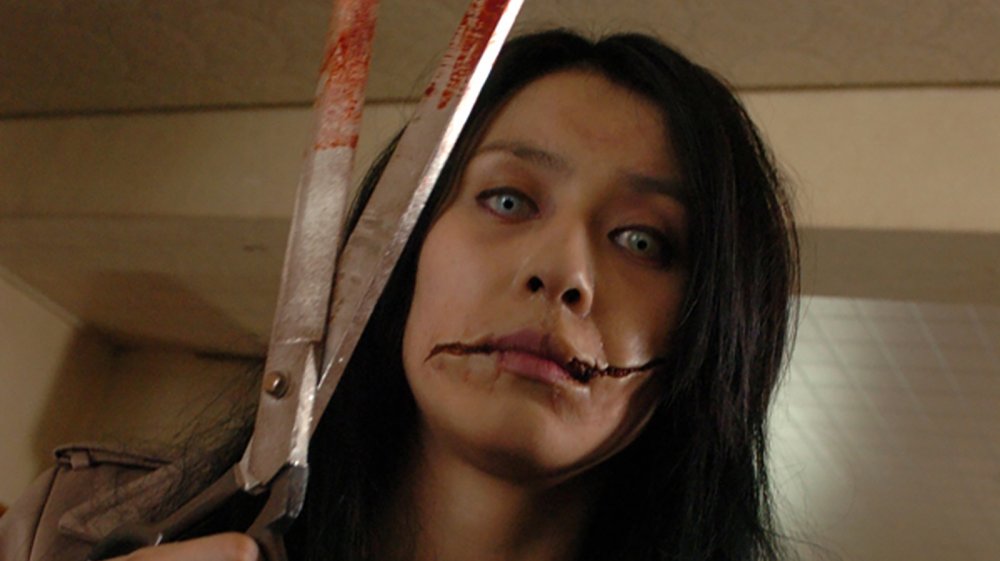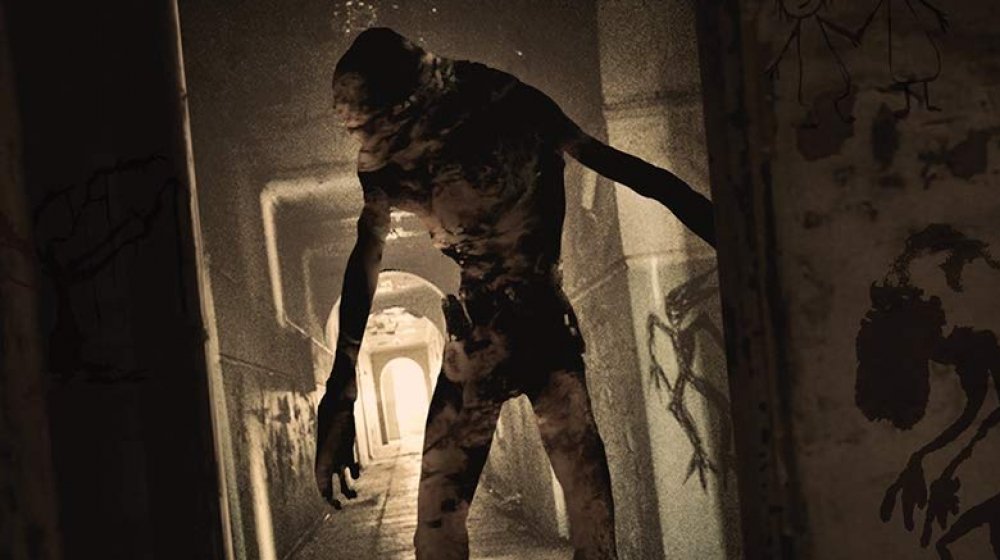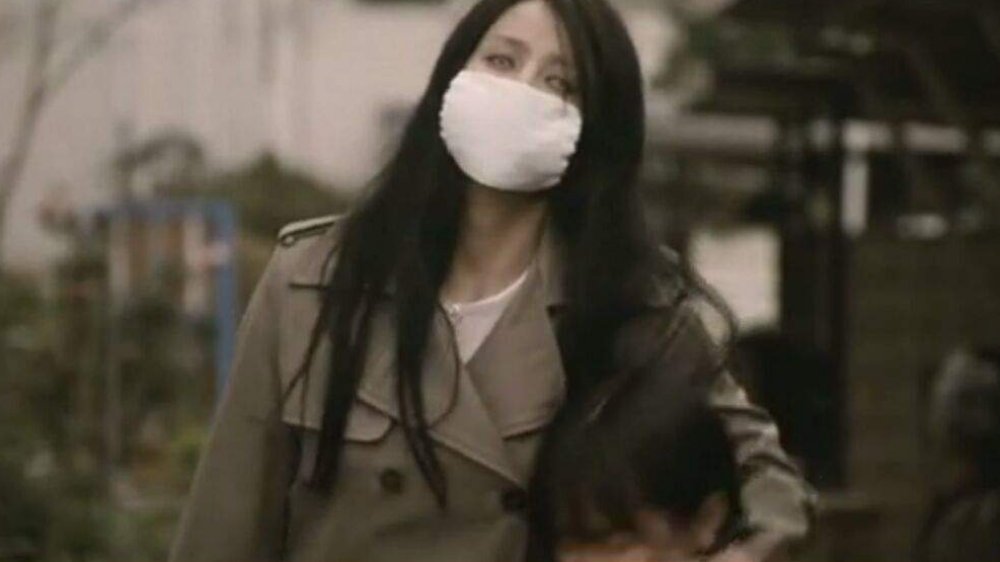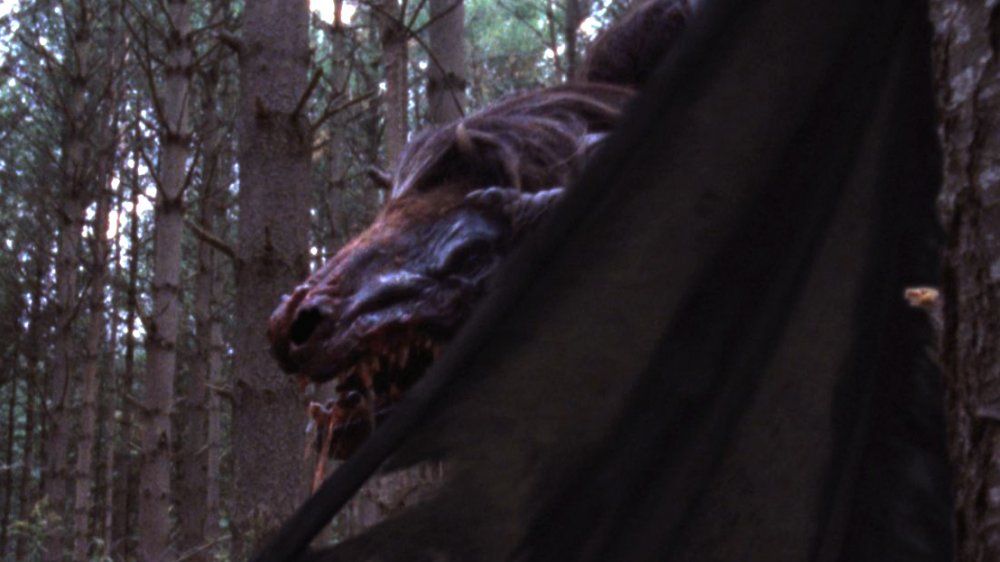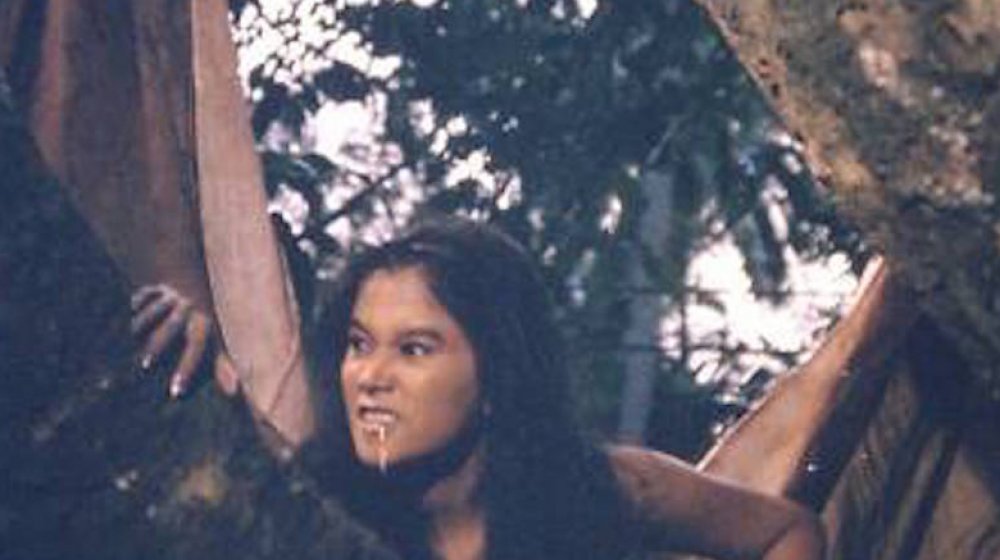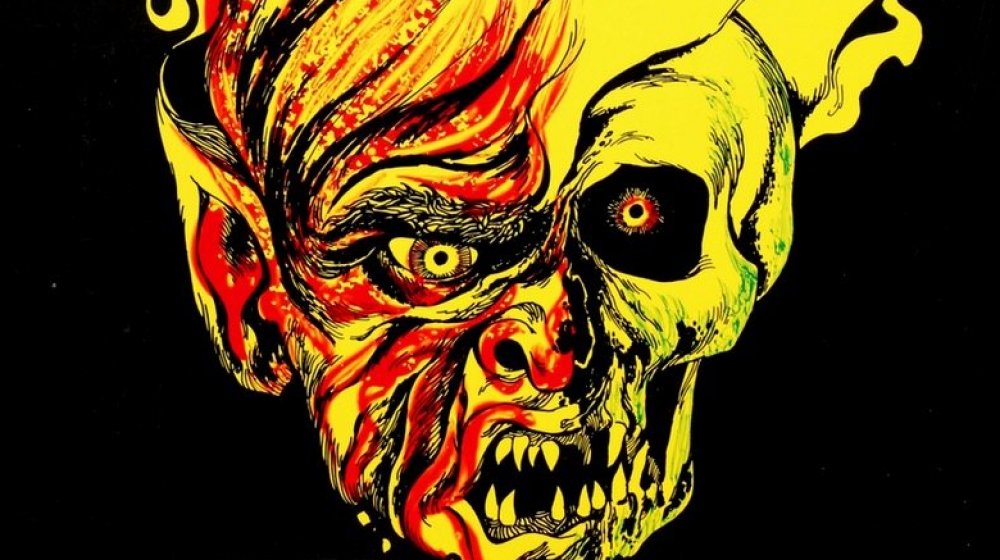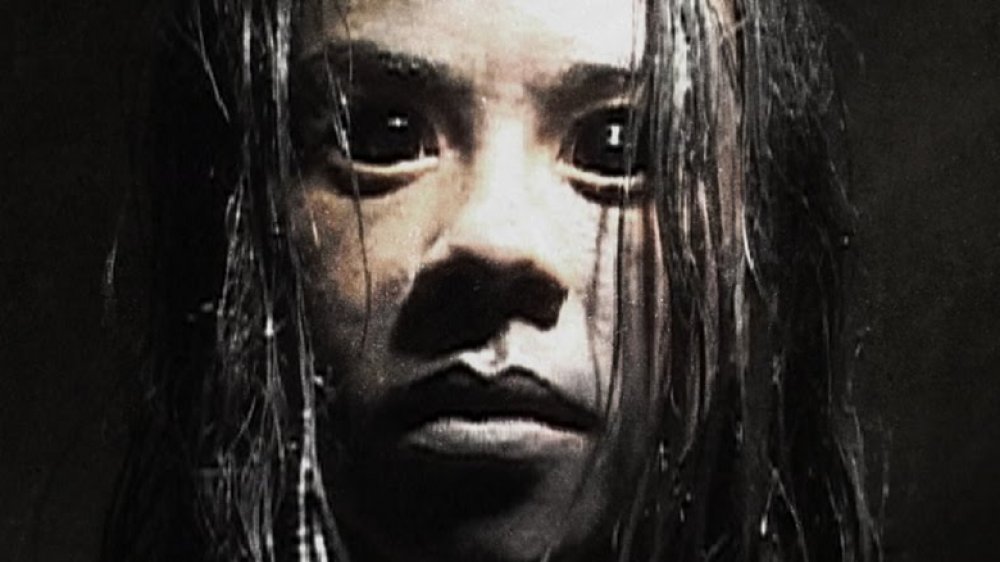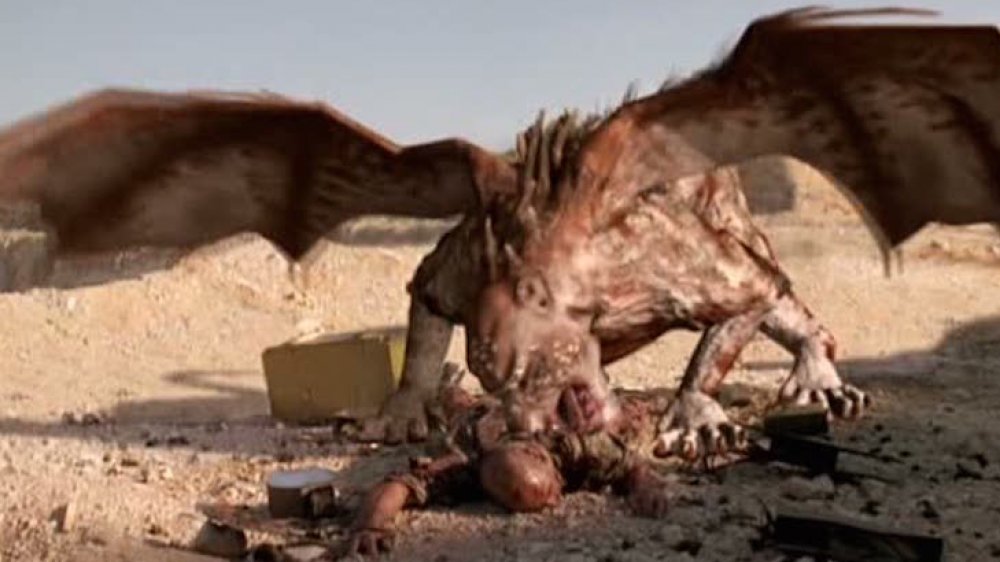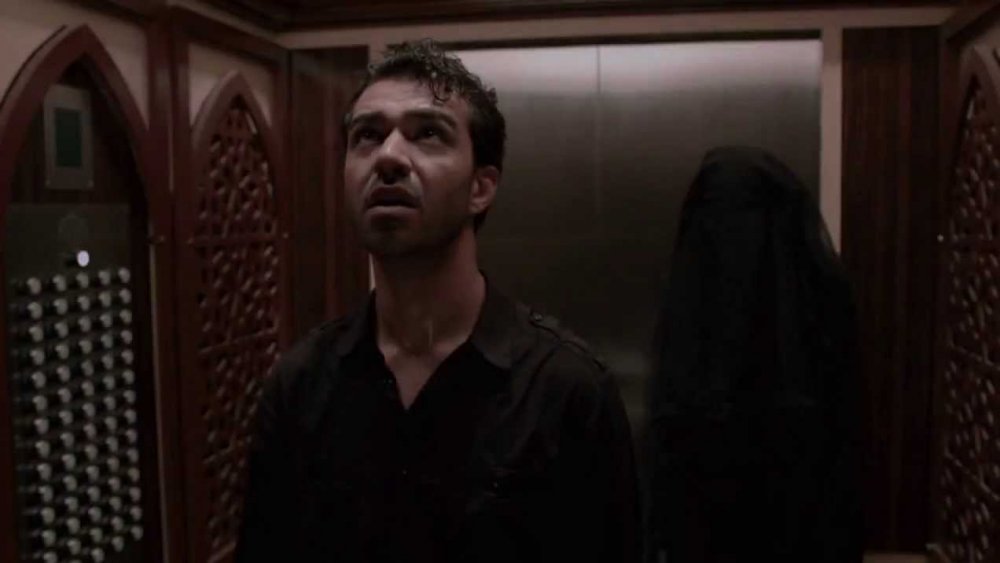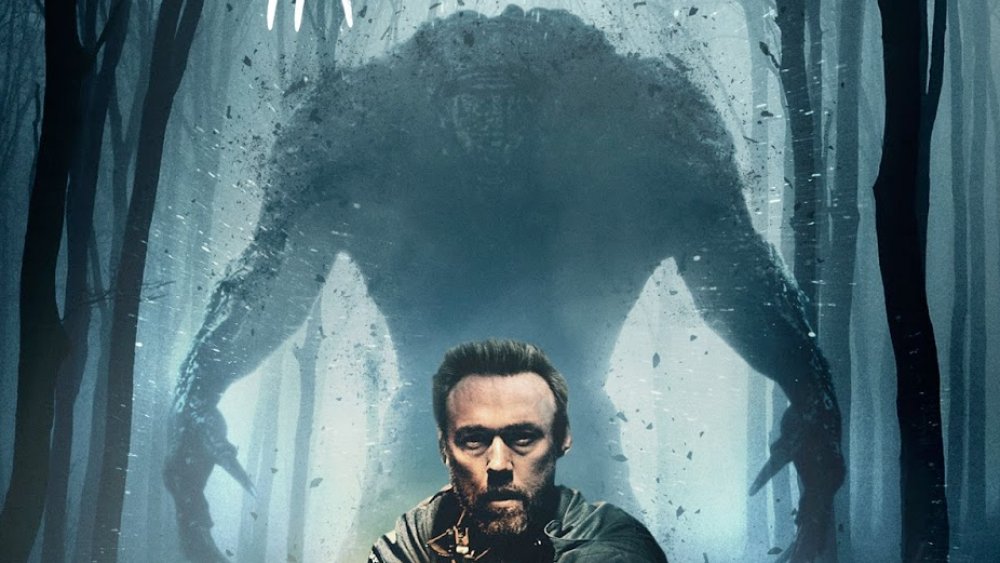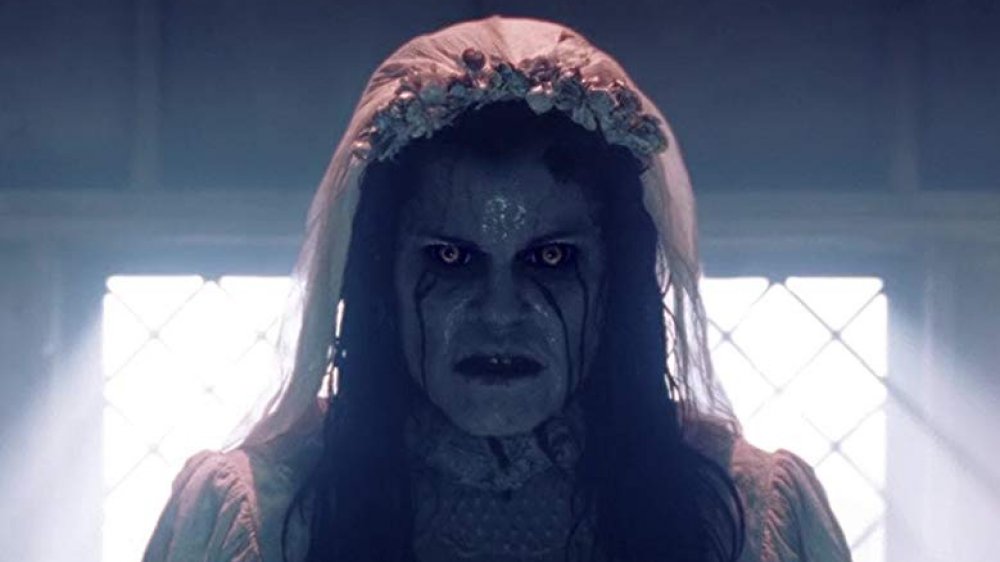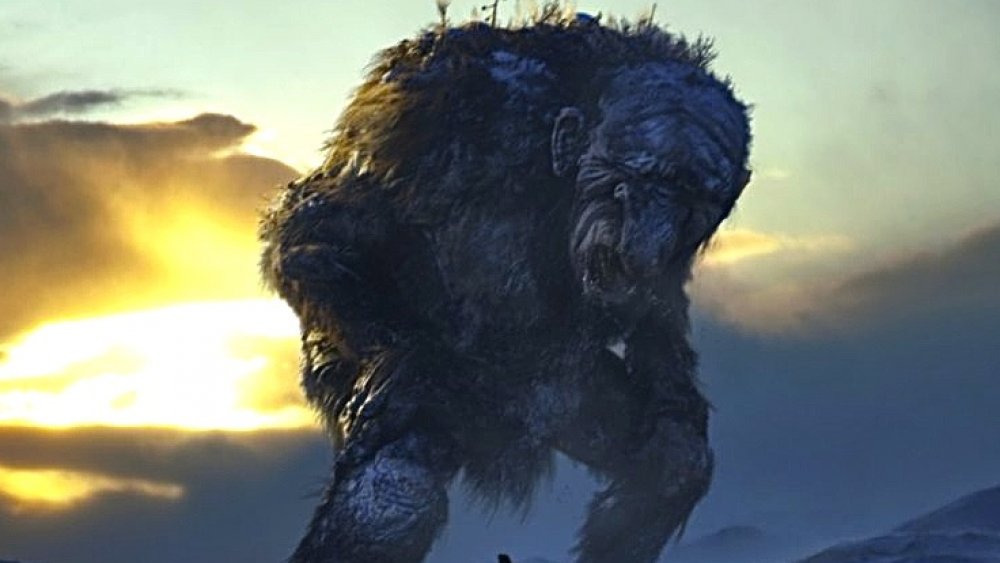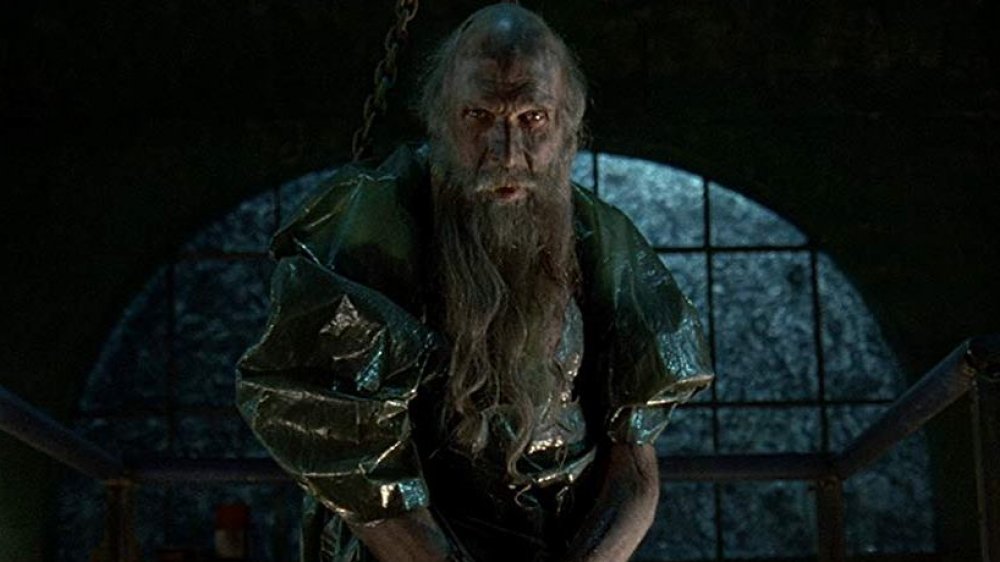The Best Monster Movies Based On Real-Life Folklore
Anyone with even a passing interest in mythology and folklore knows that in addition to amazing heroes and larger-than-life stories, every culture also has its share of strange and horrifying monsters. They play a vital role in cultures around the world, in a wide variety of ways, but principally, they put a face to inexplicable forces and offer a warning to the curious or foolhardy. Some monsters have even transcended their cultural borders and become signifiers of evil to all mankind, like vampires, werewolves, and zombies.
Horror filmmakers around the world have been tapping into the terrifying legacies of these monsters for decades. Scan your streaming services and you'll see countless movies devoted to Bigfoot, Mothman, the Abominable Snowman, and La Llorona. Some of these flicks are good for a laugh, but some reach into that same deep well of fear our ancestors felt when they first heard of these creatures. These 12 monster movies vary wildly: Some feature familiar fiends, and some star lesser-known creatures of night. But all of them are based on real myths and legends from around the world. Take caution: We're about to get spoiler-y.
The Tokoloshe is South Africa's boogeyman
The Tokoloshe (sometimes spelled "Tikoloshe") is a mischievous spirt that haunts South African folklore. Variations exist, but one detail prevails: The Tokoloshe wreaks havoc in people's lives. Typically described as a small, hairy male creature often associated with water, the Tokoloshe can be summoned by a malevolent person to upset another's life. The monster carries out everything from general mischief — frightening children, biting the toes of sleepers –- to causing illness and even death. Like Bigfoot and the Chupacabra, the Tokoloshe has appeared in the news, as people have attributed very real misfortune to the Tokoloshe's evil nature. Many mentions can also be found in songs, novels, and even films.
The Tokoloshe, a South African horror film released in 2018, uses the monster as both a boogeyman and a vehicle for social commentary. Here, the Tokoloshe's reputation for physical and sexual violence becomes a metaphor for the abuse heaped upon a young woman by her father and male employer at a hospital, where she attempts to protect a young female patient who insists that the creature is stalking her. A Tokoloshe — real or imagined — eventually does turn up in the film, though it's a far cry from the tiny terror of South African folklore. Still, even a smaller version of the spirit sounds terrifying.
Kuchisake-onna has a question for you
Japanese folklore is full of malevolent spirts, but few are as harrowing as Kuchisake-onna, the "slit-mouthed woman." As with many legends, she has a few different origin stories to her name, but most describe her as a woman mutilated by a jealous husband who cut the corners of her mouth from ear to ear. She usually appears to travelers in lonely areas with a mask across her mouth, and offers them a ghastly lose-lose scenario. She starts by asking, "Am I pretty?" Those who answer yes are then shown her horrible disfigurement. "Even now?" she presses. Answering no earns you a face slashed just like hers, or in some stories, an instant death. Answering yes might mean you get your mouth slashed, or it could get you a brief reprieve ... followed by a brutal death later that night. Though her legend dates back to the 17th century, this ghost hit her stride as a popular urban legend in the late 1970s, when reports of encounters from children on their way home from school spread throughout Japan.
Kuchisake-onna joined Sadako, Kayako, and other onryo (vengeful ghosts) on movie screens in 2007's Carved: The Slit-Mouthed Woman. Here, she's the spirit of an abusive mother who possesses other women in order to continue preying on children after death. A 2008 sequel, Carved 2: The Scissors Massacre, merges the Kuchisake-onna tale with a story about a teenager disfigured with acid by her sister's jealous ex-boyfriend.
The Jersey Devil prowls the Garden State
Arguably one of the most famous regional creatures in American folklore, the Jersey Devil is a huge, two-legged beast resembling a kangaroo with a horse-like head and bat wings that allow it to traverse its haunting ground, New Jersey's eerie Pine Barrens. Local legends date its origin back to 1735, when a woman, pregnant with her 13th child, cursed the unborn baby, which caused it to take a monstrous form. Sightings of the Jersey Devil have been reported since the early 19th century and continue to this day, but most Garden State residents embrace their homegrown horror as a sort of mascot. Its name has been lent to the state's hockey team, countless merchandise items, and even a song by native son Bruce Springsteen.
The Jersey Devil has been featured in several films and on various television series, most notably a season one episode of The X-Files entitled "The Jersey Devil". On occasion, the monster's fearsome reputation has been used in crime fiction as a means to cover up a human killer's crimes, as in The Last Broadcast. But 2012's The Barrens, from Saw veteran Darren Lynn Bousman, gives us a Devil that's both a figment of troubled dad Stephen Moyer's imagination and an impressive flesh-and-blood monster — with an emphasis on blood.
The manananggal is one of the grossest monsters in world mythology
If you're enjoying a snack right now, put it aside for a moment, because this mythological creature is one of the most disgusting in all of world folklore. The manananggal, which hails from the Philippines, looks like a woman during the day, but at night, transforms into a monster in order to hunt for prey. Its favorite mode of transportation is to sprout wings and then detach its torso from its lower half ("manananggal" is derived from the Tagalog term "tanggal," which means "to remove"). The upper half then flies, with its internal organs trailing behind, in search of pregnant women, from which it extracts blood, viscera, or the heart of their fetus. The two halves must then rejoin before sunrise or the creature will die. Did we mention that the manananggal is disgusting?
The mananaggal is just one of several body-splitting, blood-drinking creatures in Asian folklore, including the penanggalan, the Krasue, and the Leyak. Many of them have turned up in films in their respective countries. One of the manananggal's best showcases is the 1984 Filipino horror anthology Shake, Rattle & Roll, in which we see the Manananggal in all its gross-out glory, as well as an example of a proper way to dispose of the creature. Apparently, one must use salt to destroy the lower half, which leaves the gloppy upper half vulnerable to destruction by daylight.
The banshee has bad news for you
The banshee of Irish and Scottish mythology is a female spirit whose wailing cries at night usually indicate an impending death in a family. Her appearance varies according to region: Banshees have been described as young, old, monstrous, and fairy-like, standing anywhere from a foot tall to giant-sized, wearing a cloak or a veil, or carrying a comb for their long hair. Most legends describe banshees with red eyes from constant weeping, and as posing no physical threat –- a banshee's voice is what's actually dangerous. Depending on the story, her voice has been compared to a mournful song, moaning, and screams that can drive listeners to madness and even suicide. Reports of banshee wails still make the news from time to time, though skeptics have opined that the sound is actually often the call of the barn owl.
The banshee actually hasn't enjoyed as many big and small-screen outings as other monsters of folklore. The best-known banshee movie is most likely 1970's Cry of the Banshee, featuring Vincent Price as an evil judge who is cursed by a witch to suffer at the hands of a briefly glimpsed, devil-like sidhe –- an umbrella term for the supernatural creatures that inhabit prehistoric burial mounds across Ireland. Since the banshee is a sidhe –- the Old Irish phrase for banshee is "bean sidhe," or "woman of the mounds" -– and the creature does scream, by default, it's a banshee.
A ferocious family of Filipino night creatures
The term "aswang" refers to many different kinds of supernatural creatures in Filipino folklore. Most accounts list six or more species of aswang, including Filipino variations on vampires, ghouls, were-animals (cats, dogs, pigs), witches, and "viscera suckers" like the manananggal, as well as various malevolent ogres, and the tiyanak, which takes the shape of a crying child to lure adults to their deaths. Though each type of aswang has its own awful characteristics –- were-dogs prefer to eat pregnant women, while ghouls smell bad — each also shares similar traits, most notably an ability to change their shape to resemble humans. Their true nature is often revealed by looking into their eyes, in which your reflection will appear upside down. They can be killed with traditional vampire-fighting gear like crosses and garlic, or the tail of a stingray.
Aswang appear in a slew of Filipino horror films, as well as a handful of Western movies and TV shows. One of these, a 1994 independent American production simply titled Aswang (also known as The Unearthing), emphasizes the nastier aspects of the aswang legend with a story about a pregnant woman who discovers the mystery man she's agreed to join in a sham marriage has some very unpleasant designs on her unborn baby.
The manticore is three beasts in one
Bestiaries were illustrated texts written before and during the Middle Ages, which compiled descriptions of the world's animal population. The authors often included imaginary creatures in these texts, which is why you'll find lions and horses next to dragons, unicorns, and a three-in-one monster called the manticore in many bestiaries. A legendary creature from ancient Persia, the manticore has the body of a lion (sometimes with a set of wings) and the head of a human — some are said to speak with a beautiful voice from a mouth bearing three rows of sharp teeth. It also has a tail that sports either a scorpion's barb or spikes that it can fire at prospective meals before devouring them whole. Scholars have described the manticore as an interpretation of a tiger, though some have also said that it's an allegorical monster representing the mysteries of Asia — or possibly just plain entertainment.
A very lion-like (and stressed out) manticore is featured in Pixar's Onward, but the 2005 SyFy original film Manticore actually incorporates elements of the creature's legend. This monster does indeed hail from the Middle East –- Iraq, specifically — where it decimates a US Special Forces squad with its barbed tail, dragon wings, and toothy feline head. It also spews acid, but that's a creation of the filmmakers.
You'll wish you'd never met the jinn
The wish-granting, fez-wearing genies from TV sitcoms and Disney animation are all sanitized versions of jinn (or djinn), an all-purpose term for a host of ethereal and supernatural beings from Islamic myth and legend. The core definition of the jinn is an invisible spirit that can adopt a variety of forms –- animal, elemental, and human, or combinations of all three -– in order to interact with humans. Depending on the jinn in question, they can help people (see Aladdin) or harm them through bad luck, illness, and even possession. Because they are mentioned in several passages of the Qur'an, jinn have an interesting place in Islamic history: Their influence has most often been linked to various diseases and health conditions like epilepsy and sleep paralysis.
Jinn have appeared in dozens of films, television shows, video games, and other media, and have been depicted as everything from cuddly and alluring to totally monstrous. The spirit in Tobe Hooper's 2013 feature Djinn definitely falls into the latter category: Filmed in the United Arab Emirates, it tells the story of an Emirati couple who move into a high-rise that may very well be haunted. Though it didn't earn the best reviews, it definitely offers a fresh take on jinn that couldn't be further away from Disney's big blue wish-granter.
The wendigo's tale has bite
Ah, winter: The snow, the crisp air, the holiday cheer ... and the cannibalism? Well, yes, if you're talking about the wendigo. A hideous spirit found in numerous legends of Algonquin Native American and First Nations cultures, the wendigo appears as an emaciated, corpse-like figure that consumes anyone unlucky enough to cross its path in the snow-swept forest. The how and why of the wendigo differs according to who's telling it: Some traditions believe that a person who resorts to cannibalism becomes a wendigo, while others consider magic, greed, or insanity as primary factors in a wendigo's creation. Regardless of the reason, becoming or encountering a wendigo means endless hunger and a horrible death.
Like many monsters of folklore, the wendigo has been featured in a number of movies, television shows, and in other media. Marvel Comics has pit those transformed into this monster against the Hulk, Wolverine and other heroes. One of the better, though surprisingly less-known wendigo movies is 2014's Dark Was the Night, which sees the residents of a small logging town face off against a brawny, super-sized wendigo. In addition to delivering some big scares, it manages to tap into everything we find scary about the winter: The cold, the silence, and what might be waiting out in the dark.
La Llorona is sad and scary
Behind many horrifying stories is an element of sadness. The legend of La Llorona, or the Weeping Woman, is one of the eeriest examples of this. She appears in folklore from Mexico and Central America, and is usually described as a woman in a white gown whose wailing can be heard near bodies of water at night. Children, and sometimes husbands, who encounter her are never seen again. The reasons for La Llorona's terrifying actions are as different as the cultures from which she hails, but all tend to center around a woman who drowns her children in a fit of anger or revenge against her husband, and is cursed to wander the Earth in search of them. She remains popular in Latin culture, both as a frightening boogeyman and as a tragic figure.
The combination of horror and sadness in La Llorona's story has been adapted for film as far back as 1933, as well as for television, theater, books, and music. The most recent cinematic take on the story is 2019's The Curse of La Llorona, in which a woman (Patricia Velasquez) calls on the spirit to get revenge against the social worker (Linda Cardellini) who takes away her children. It's the sixth installment in the Conjuring Universe, connected to its larger story by an appearance from Tony Almendola's Father Perez, seen in the Annabelle movies.
Old-fashioned trolls are straight-up monsters
We're not talking about anonymous goons who haunt the internet here: These trolls hail from European legend. Though as we've seen with other monsters, "troll" can denote many different kinds of creatures. In Old Norse and German, "troll" can refer to any sort of monster that lives in remote areas and poses a threat to humans. Over time, trolls became known as both giant, man-eating creatures and tiny, helpful sprites, not unlike gnomes (and yes, rather like Dreamworks' Trolls). A third type of troll, the Huldrefolk ("hidden-folk"), are closer to fairies or elves, appearing to be attractive humans with long cow tails. One famous example of old-school trolls comes from the play Peer Gynt, in which the hero angers a hideous troll, the Mountain King, by falling for his beautiful daughter. You've probably heard the furious orchestral piece that accompanies that scene, "In the Hall of the Mountain King," in countless movies and video games.
These creatures appear in any number of fantasy and horror films, television shows, and works of literature. But one of the best representations of traditional European trolls is unquestionably in the Norwegian mockumentary Trollhunter, which shows four different species of trolls -– three giant, ornery, and dull-witted monsters, and a smaller but no less short-tempered variation — all of which hew closely to folkloric depictions of these creatures.
Jolly old monster Claus
Wait a minute -– Santa Claus? He's not a monster! Well ... yes and no. The origins of Santa can be traced back to pagan gods –- in particular, Odin, who often appeared as an old man with a long beard who flew through the air on the back of an eight-legged horse. But that's not acknowledging the influence of St. Nicholas and Father Christmas and all the other proto-Santas that have come, gone, and often, still persist. However, early versions of Santa did travel with some scary assistants: The best-known of these is undoubtedly Krampus, a demonic figure who accompanied representations of St. Nicholas or Sinterklaas in Middle European Christmas celebrations and stole away naughty children. Some of these figures are still part of holiday celebrations: In Switzerland, Father Christmas is joined by Schmutzli, a cowled figure who doles out beatings with a switch, while Germany has Belsnickel, who can be best described as Santa's sasquatch, administering both justice and delicious snacks.
The closest thing to an actually monstrous Santa might be Joulupukki, a terrifying half-man, half-goat from Finnish folklore. Unlike Santa, Joulupukki received gifts –- sacrifices, really — to keep him from frightening people. Eventually, Joulupukki became conflated with the benevolent Santa Claus, but it's the pagan version that appears in 2010's Rare Exports: A Christmas Tale, a darkly humorous Finnish fantasy which imagines Santa's elves as feral men and Santa himself as a horned, Cthulhu-sized Joulupukki encased in ice below a mining town.
